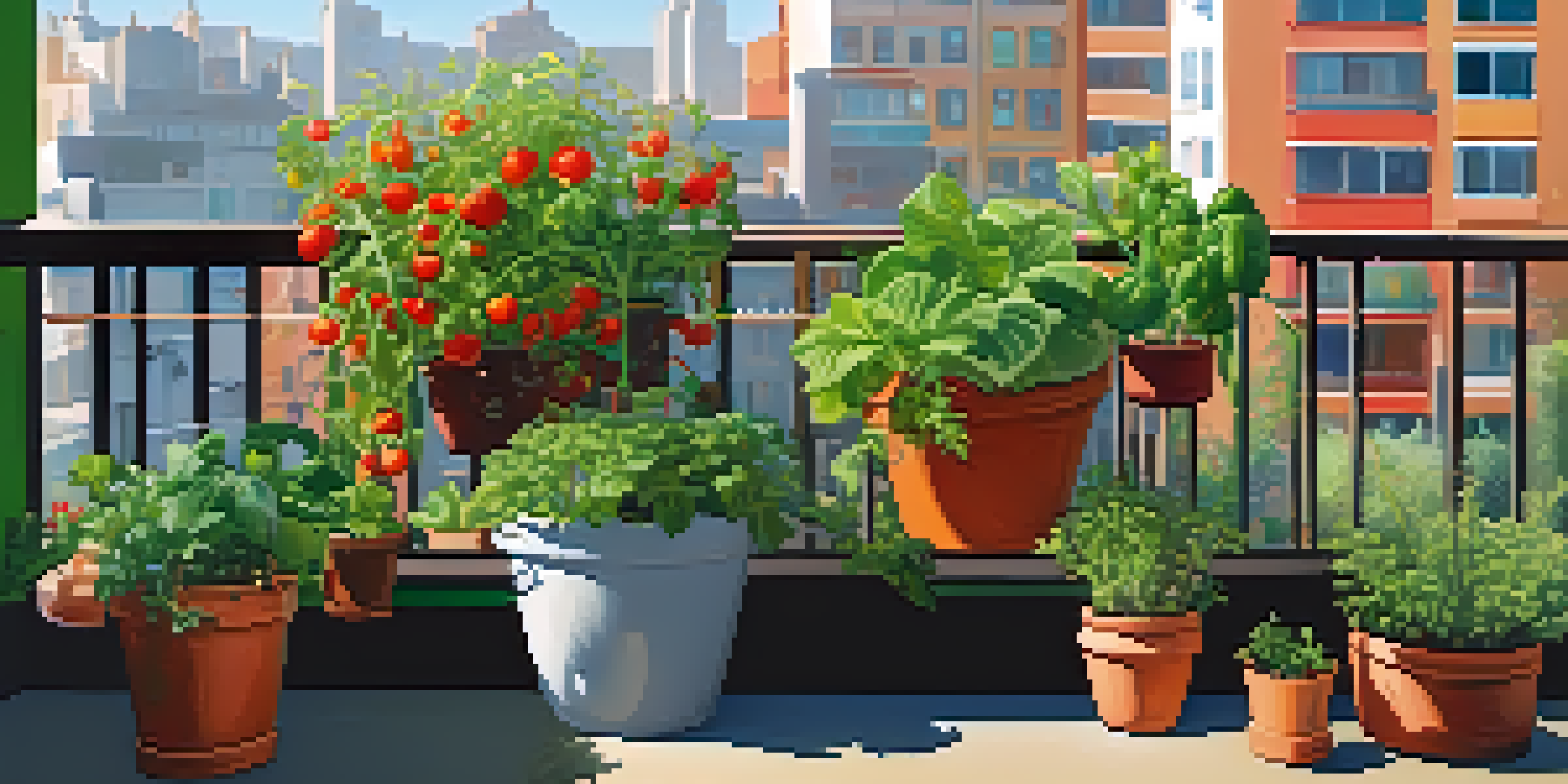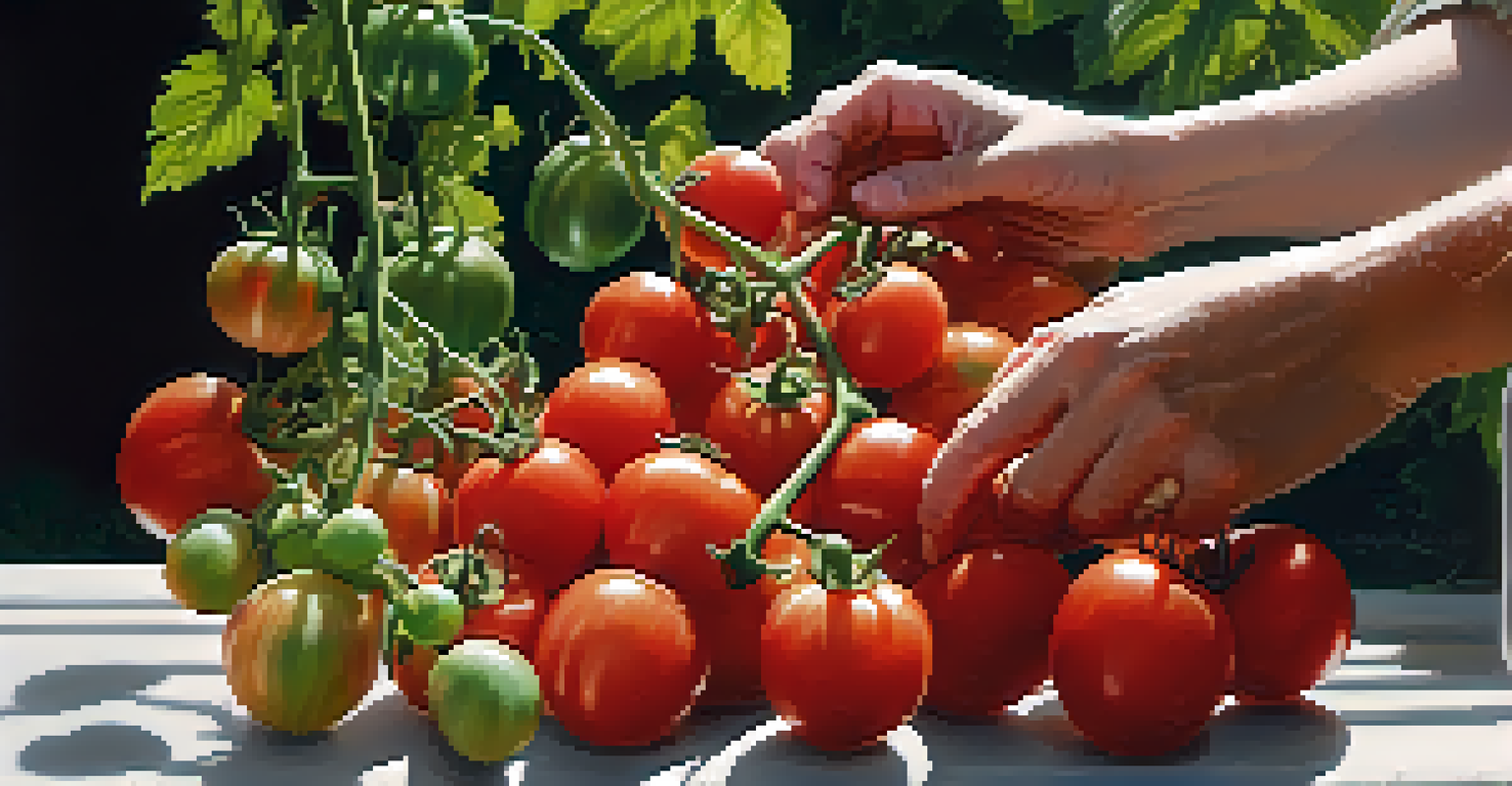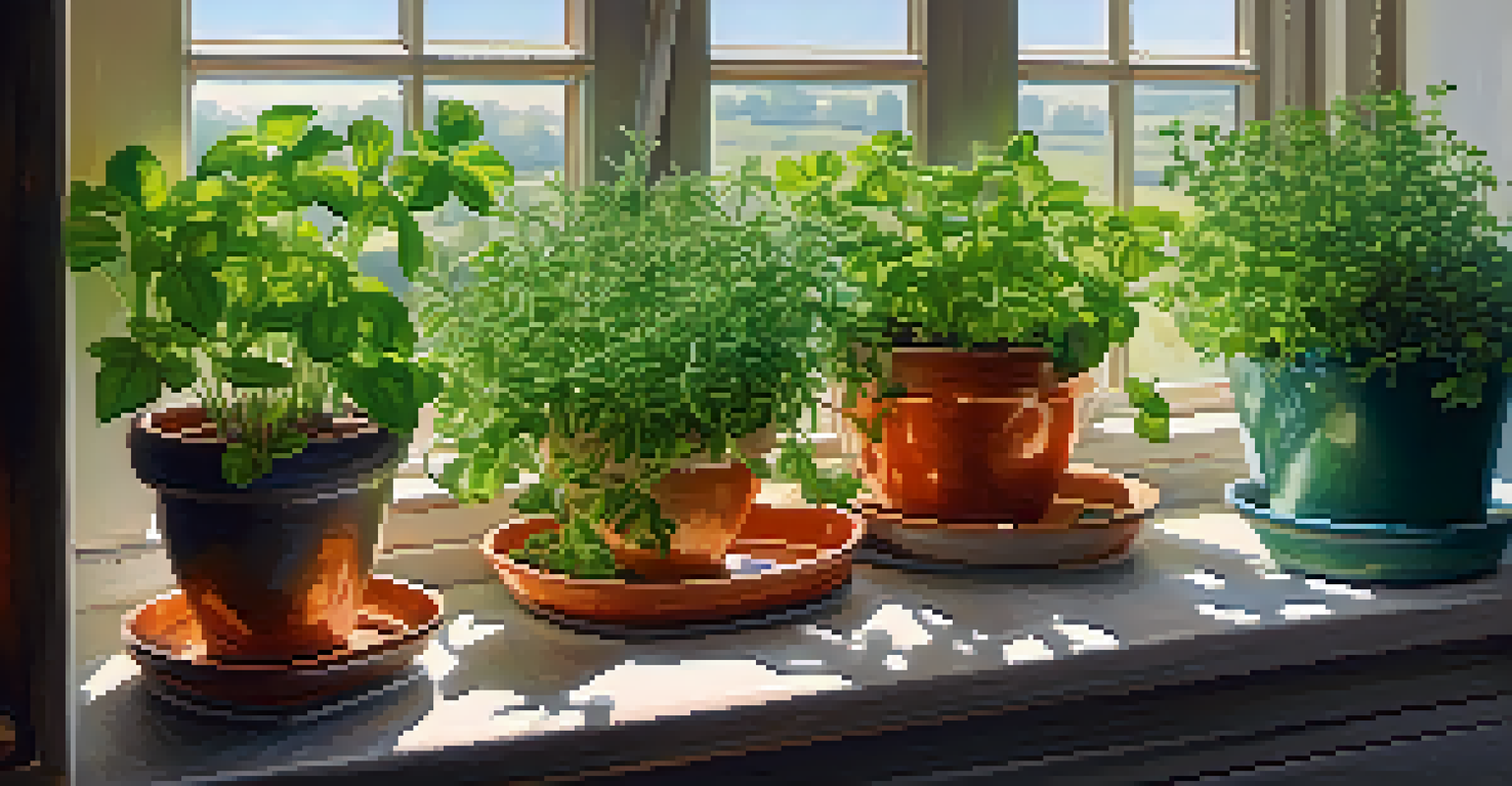Container Gardening: Best Vegetables for Small Spaces

Why Choose Container Gardening for Small Spaces?
Container gardening is a fantastic solution for those with limited outdoor space. Whether you live in an apartment or have a tiny backyard, growing vegetables in containers allows you to cultivate fresh produce right at home. It provides flexibility in placement, as you can move pots to catch the sun or avoid harsh weather.
Gardening is a way of showing that you believe in tomorrow.
Moreover, container gardening can reduce common gardening challenges, such as poor soil quality. By using potting mix tailored for containers, you can ensure your plants get the nutrients they need. Plus, it’s easier to control watering and drainage, which is crucial for healthy plant growth.
Finally, container gardening can be incredibly rewarding. Watching your vegetables grow in small pots can bring immense satisfaction, and it’s a great way to introduce children to gardening. It’s not just about the end product; it’s about enjoying the process of nurturing your plants.
Choosing the Right Containers for Vegetables
Selecting the right container is key to successful container gardening. Opt for pots that are at least 12 inches deep for most vegetables, ensuring roots have enough room to grow. Materials like plastic, ceramic, or wood can work well, but make sure they have drainage holes to prevent waterlogging.

Consider the weight of the containers, especially if you plan to move them around. Lightweight options are easier to handle, but heavier materials can help stabilize plants in windy conditions. You might also want to think about aesthetics; colorful pots can add charm to your balcony or patio.
Container Gardening for Small Spaces
Container gardening allows you to grow fresh produce at home, making it ideal for those with limited outdoor space.
Lastly, don’t forget to choose containers that suit the climate of your area. Dark-colored pots can absorb more heat, which might be beneficial in cooler climates but could stress plants in hotter areas. It’s all about finding the right balance to create a thriving environment for your vegetables.
Top Vegetables for Container Gardening
When it comes to container gardening, some vegetables thrive better than others. Leafy greens like lettuce and spinach are excellent choices because they grow quickly and don’t require deep soil. They can also be harvested multiple times, providing a continuous supply of fresh greens.
To plant a garden is to believe in tomorrow.
Tomatoes are another favorite for container gardens. With varieties like cherry or patio tomatoes, you can enjoy juicy fruits without needing a large garden. Just ensure they have enough sunlight and support as they grow, and you’ll be rewarded with a bountiful harvest.
Don’t overlook herbs, either! Basil, parsley, and cilantro are perfect for pots, adding flavor to your cooking while being easy to care for. Plus, having fresh herbs just outside your door means you can elevate your meals with minimal effort.
Herbs: Easy and Rewarding Choices for Containers
Herbs are fantastic additions to any container garden, especially for those new to gardening. They generally require less space and can flourish in smaller pots. Plus, they can be used in countless recipes, making them both practical and enjoyable to grow.
Popular choices like basil, chives, and mint not only thrive in containers but also add delightful scents to your space. Many herbs can be grown indoors too, allowing you to have fresh flavors year-round. Just be sure to provide them with enough light, whether it’s from the sun or a grow light.
Choosing the Right Containers
Selecting appropriate containers with drainage and the right depth is essential for nurturing healthy vegetables.
Growing your own herbs also encourages culinary creativity. Imagine snipping fresh basil for a homemade pesto or adding mint to a refreshing drink. The satisfaction of using your own homegrown herbs can elevate your cooking experience to new heights.
Growing Vegetables from Seeds vs. Seedlings
When starting your container garden, you have a choice: grow vegetables from seeds or purchase seedlings. Seeds are often less expensive and offer a wider variety of options, but they require more time and care to germinate. If you're patient and enjoy the process, starting from seeds can be incredibly rewarding.
On the other hand, seedlings provide a quicker start to your gardening journey. They’re already growing and can give you a head start on your harvest. This can be particularly beneficial if you’re looking to maximize your yield in a short growing season.
Ultimately, the choice between seeds and seedlings depends on your gardening goals and experience level. If you’re eager for immediate results, go for seedlings. If you’re up for a challenge and want to experiment with different varieties, then seeds are the way to go!
Watering Tips for Container Vegetables
Watering is crucial in container gardening, as pots can dry out faster than traditional garden beds. A general rule of thumb is to check your plants daily, especially during hot weather. It’s important to water thoroughly, ensuring that moisture reaches the roots, but be careful not to overwater, which can lead to root rot.
Consider implementing a watering schedule based on the needs of your vegetables. Some plants, like tomatoes, may require more water as they grow, while others, like herbs, can thrive with less. Using a moisture meter can also help take the guesswork out of watering.
Harvesting for Maximum Flavor
Knowing when and how to harvest your vegetables enhances flavor and encourages continued growth.
Additionally, you might want to explore self-watering containers. These pots have a reservoir that provides a steady supply of moisture, reducing the frequency of watering. They can be a game-changer, especially for busy gardeners or those who travel frequently.
Harvesting: When and How to Enjoy Your Produce
Harvesting your vegetables is one of the most exciting parts of container gardening. Knowing when to pick your produce is essential for optimal flavor and texture. For example, leafy greens can be harvested once they reach a reasonable size, while tomatoes should be picked when they are fully colored and slightly soft to the touch.
Use sharp scissors or garden shears to avoid damaging the plants when harvesting. This ensures that the remaining parts of the plant can continue to grow. It’s also important to pick regularly; many plants will produce more fruit when they are continuously harvested.

Finally, enjoy the fruits of your labor! Whether it’s a fresh salad made with your homegrown greens or a delicious tomato sauce, there’s nothing quite like the taste of vegetables that you’ve nurtured from seed to table. It’s a satisfying way to connect with your food and appreciate the gardening journey.